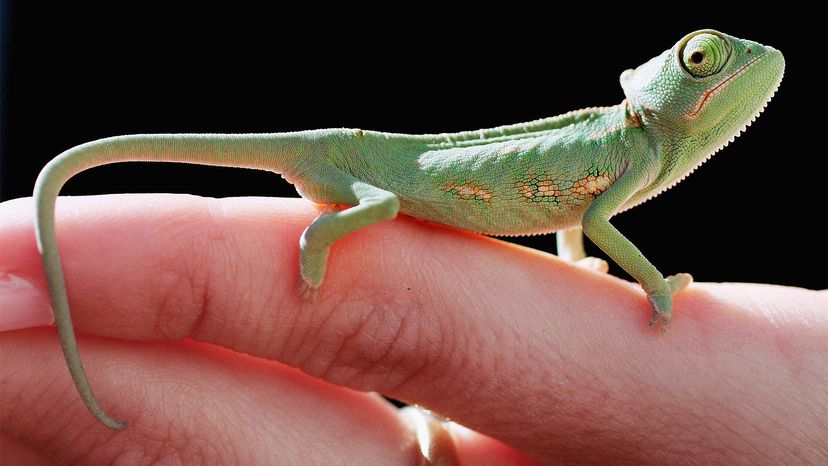No color is off limits to a chameleon. While a lot of animals have color patterns — birds and fish, for example — the cells that make their vibrant displays possible typically absorb or reflect certain regions of the visible light spectrum.
Chameleon skin cells are different from the cells of these animals and other lizards; iridophores can actually absorb or reflect any and all colors of the spectrum, rather than just certain colors.
"Some species change more colors than others," Flynn says. "For example, some will change shades lighter to darker, while others will change to more vibrant, bright colors. There are quite a few species, so there is a lot of variance. Among all of them, they can change all different types of colors — even colors that aren't visible to the human eye!"
Tiny sacs contain the pigments inside the iridophores of a live chameleon, but when the chameleon's mood changes, its nervous system activates these cells, contracting or expanding them.
When the animal is relaxed, the cells stay close together and reflect short wavelengths, like blue. A rush of excitement pushes those cells farther apart, enabling each iridophore to reflect longer wavelengths, like red, orange and yellow.



